What to Know About Green Beans
Green beans, also called string beans, are one of the most popular vegetables in the U.S. They’re a delicious side dish that appears at family get-togethers, holidays, and weeknight dinners. Whether they’re sautéed, steamed, blanched, canned, or frozen, green beans are a delicious and healthy choice.

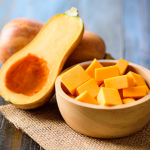 Butternut: These are long with a bulbous end and a smooth tan skin. Because the skin is a little thick, you’ll want to peel them before cutting into chunks or dicing. Or, you can cut them lengthwise, remove the seeds, and roast them in the skin if to scoop out the flesh. Put these tips to action with this
Butternut: These are long with a bulbous end and a smooth tan skin. Because the skin is a little thick, you’ll want to peel them before cutting into chunks or dicing. Or, you can cut them lengthwise, remove the seeds, and roast them in the skin if to scoop out the flesh. Put these tips to action with this 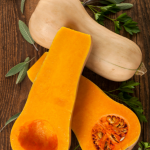 Honeynut: This is a smaller, sweeter version of the butternut with deeper orange flesh. It is about half the size of a butternut squash and a hybrid of butternut and buttercup squash. They are excellent when roasted with lots of herbs (think sage, thyme, rosemary), garlic, and just a bit of parmesan cheese.
Honeynut: This is a smaller, sweeter version of the butternut with deeper orange flesh. It is about half the size of a butternut squash and a hybrid of butternut and buttercup squash. They are excellent when roasted with lots of herbs (think sage, thyme, rosemary), garlic, and just a bit of parmesan cheese.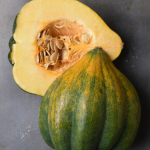 Acorn: Don't let the name fool you, this squash is not for the squirrels! You’ll love this sweet, petite green squash. Keep the skin on and slice into circles to grill or roast, Alternatively, you can slice in half lengthwise to stuff like these
Acorn: Don't let the name fool you, this squash is not for the squirrels! You’ll love this sweet, petite green squash. Keep the skin on and slice into circles to grill or roast, Alternatively, you can slice in half lengthwise to stuff like these 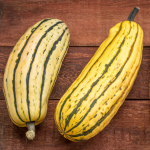 Delicata: These oblong squash are cream colored and have either green or yellow stripes. They are sweet and a perfect way to enjoy squash since they’re so easy to prepare. They can be sautéed, steamed, roasted, grilled, baked, or stuffed.
Delicata: These oblong squash are cream colored and have either green or yellow stripes. They are sweet and a perfect way to enjoy squash since they’re so easy to prepare. They can be sautéed, steamed, roasted, grilled, baked, or stuffed.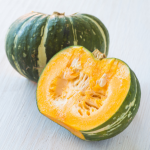 Green kabocha: These Japanese pumpkins are dense and sweet and usually deep green in color. Roast and turn them into soup with ginger, cumin, coriander, and garlic. Or slice and roast with olive oil, fresh ginger, thyme, and a little nutmeg.
Green kabocha: These Japanese pumpkins are dense and sweet and usually deep green in color. Roast and turn them into soup with ginger, cumin, coriander, and garlic. Or slice and roast with olive oil, fresh ginger, thyme, and a little nutmeg.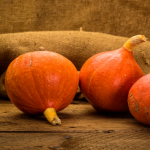 Red kuri: Also called Hokkaido pumpkins, these little orange squash have a slight chestnut flavor, making them perfect for stews or side dishes in which they’re paired with other root veggies and some greens. Consider adding red kuri squash to
Red kuri: Also called Hokkaido pumpkins, these little orange squash have a slight chestnut flavor, making them perfect for stews or side dishes in which they’re paired with other root veggies and some greens. Consider adding red kuri squash to  Sugar pumpkin: Unlike the larger jack-o-lantern pumpkins, sugar pumpkins are sweet and dense. They’re the pie pumpkin, but just as delicious for stews, stuffed, or soup. Give this
Sugar pumpkin: Unlike the larger jack-o-lantern pumpkins, sugar pumpkins are sweet and dense. They’re the pie pumpkin, but just as delicious for stews, stuffed, or soup. Give this 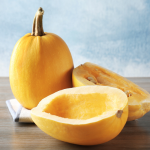 Spaghetti: You’d never guess from its exterior that you can make a low-carb “pasta” with this squash. Halve it and bake, scoop out the seeds, then use a fork to scrape the flesh into strands. They’re like a blank canvas in terms of flavor so be creative in saucing them. You can go for the classic
Spaghetti: You’d never guess from its exterior that you can make a low-carb “pasta” with this squash. Halve it and bake, scoop out the seeds, then use a fork to scrape the flesh into strands. They’re like a blank canvas in terms of flavor so be creative in saucing them. You can go for the classic 







